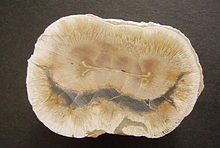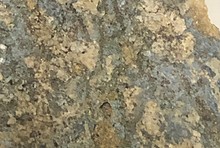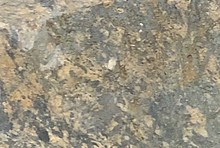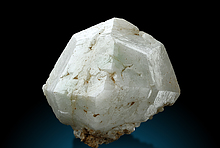Home PageAbout MindatThe Mindat ManualHistory of MindatCopyright StatusWho We AreContact UsAdvertise on Mindat
Donate to MindatCorporate SponsorshipSponsor a PageSponsored PagesMindat AdvertisersAdvertise on Mindat
Learning CenterWhat is a mineral?The most common minerals on earthInformation for EducatorsMindat ArticlesThe ElementsThe Rock H. Currier Digital LibraryGeologic Time
Minerals by PropertiesMinerals by ChemistryAdvanced Locality SearchRandom MineralRandom LocalitySearch by minIDLocalities Near MeSearch ArticlesSearch GlossaryMore Search Options
The Mindat ManualAdd a New PhotoRate PhotosLocality Edit ReportCoordinate Completion ReportAdd Glossary Item
Mining CompaniesStatisticsUsersMineral MuseumsClubs & OrganizationsMineral Shows & EventsThe Mindat DirectoryDevice SettingsThe Mineral Quiz
Photo SearchPhoto GalleriesSearch by ColorNew Photos TodayNew Photos YesterdayMembers' Photo GalleriesPast Photo of the Day GalleryPhotography
╳Discussions
💬 Home🔎 Search📅 LatestGroups
EducationOpen discussion area.Fakes & FraudsOpen discussion area.Field CollectingOpen discussion area.FossilsOpen discussion area.Gems and GemologyOpen discussion area.GeneralOpen discussion area.How to ContributeOpen discussion area.Identity HelpOpen discussion area.Improving Mindat.orgOpen discussion area.LocalitiesOpen discussion area.Lost and Stolen SpecimensOpen discussion area.MarketplaceOpen discussion area.MeteoritesOpen discussion area.Mindat ProductsOpen discussion area.Mineral ExchangesOpen discussion area.Mineral PhotographyOpen discussion area.Mineral ShowsOpen discussion area.Mineralogical ClassificationOpen discussion area.Mineralogy CourseOpen discussion area.MineralsOpen discussion area.Minerals and MuseumsOpen discussion area.PhotosOpen discussion area.Techniques for CollectorsOpen discussion area.The Rock H. Currier Digital LibraryOpen discussion area.UV MineralsOpen discussion area.Recent Images in Discussions
PhotosChalcocite - Steward Mine, Butte, Butte District, Silver Bow Co., Montana, USA

10th Jul 2017 22:46 UTCRichard Gunter Expert
12th Jul 2017 06:17 UTCRob Woodside 🌟 Manager

12th Jul 2017 15:39 UTCRichard Gunter Expert
These look more like octahedrons but are unlike any of the photographed Pyrite from the Butte area. The staining of Pyrite with secondary Cu sulphides in the Butte Chalcocite-Bornite-Digenite samples makes colour determination difficult, even on broken surfaces. They certainly look like very strange Pyrites.
13th Jul 2017 16:08 UTCRob Woodside 🌟 Manager

13th Jul 2017 16:14 UTCRichard Gunter Expert
I think so as well. I will have a look to see what I want to sample from it.

13th Jul 2017 22:43 UTCRichard Gunter Expert
I was investigating the pyrite crystals and found that several of the octahedral faces have isosceles triangular growth figures centered on the octahedral face rather than striations. The terminations of the triangles point to the center of the adjacent large edge. I did not think pyrite's crystal system allowed for this, does it? I have seen something similar on carrolite, where the triangular growth figures point to the junction of the large faces and on tetrahedrite but never on pyrite.
17th Jul 2017 19:12 UTCRob Woodside 🌟 Manager

17th Jul 2017 19:46 UTCRichard Gunter Expert
I have checked the crystallography and the only one that has this kind of growth feature is the Tetrahedrite Group, including Colusite. I have found identical growth features on my Tetrahedrite sample from Pachapaqui, Peru where triangular growth features occur with apacies intersecting the crystal faces. Interestingly the Tetrahedrite also contains triangular growth features that intersect the crystal edges but these triangles are 180 degrees to the first set.
I have not seen any report on these triangular growth features on Colusite. I will try to post a photo but it will be challenging.

17th Jul 2017 22:13 UTCRichard Gunter Expert
A diagram of the triangular growth features on an octahedral pyrite is from a Travesella pyrite in Dana's Elements of Mineralogy. The diagram indicates that the apex of the triangles will subtend a 33 degree or 66 degree angle to the octahedral crystal edge. Sometimes you need the old data as modern mineralogy often does not look at these things. I checked my Musen Siegenite and its triangular growth features are identical to the Carrolite, as they should be.

18th Jul 2017 00:12 UTCRichard Gunter Expert

18th Jul 2017 00:29 UTCRobert Rothenberg
Bob
18th Jul 2017 09:30 UTCRob Woodside 🌟 Manager

18th Jul 2017 15:27 UTCRichard Gunter Expert




Mindat.org is an outreach project of the Hudson Institute of Mineralogy, a 501(c)(3) not-for-profit organization.
Copyright © mindat.org and the Hudson Institute of Mineralogy 1993-2024, except where stated. Most political location boundaries are © OpenStreetMap contributors. Mindat.org relies on the contributions of thousands of members and supporters. Founded in 2000 by Jolyon Ralph.
Privacy Policy - Terms & Conditions - Contact Us / DMCA issues - Report a bug/vulnerability Current server date and time: April 23, 2024 17:01:04
Copyright © mindat.org and the Hudson Institute of Mineralogy 1993-2024, except where stated. Most political location boundaries are © OpenStreetMap contributors. Mindat.org relies on the contributions of thousands of members and supporters. Founded in 2000 by Jolyon Ralph.
Privacy Policy - Terms & Conditions - Contact Us / DMCA issues - Report a bug/vulnerability Current server date and time: April 23, 2024 17:01:04













